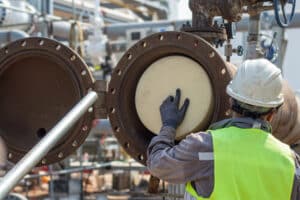In the labyrinthine network of the world’s pipelines, the flow isn’t just about crude oil or nascent organic gas – it’s also about data. And much like how we care for the veins that carry blood in our bodies, the arteries that transport vital resources globally must be maintained with the utmost care to ensure their longevity and efficiency.
Enter foam pigs – a seemingly minimal yet ingeniously efficient tool in the oil and gas industry’s pipeline maintenance armory. Whether the goal is to remove deposits, separate liquids, or simply clean out dirt and water, foam pigs are working hard across the globe to ensure the smooth flow of hydrocarbons. At SUN Pipeline Solutions in Tulsa, OK, we know a thing or two about foam pigs and their impact on the oil and gas industry.

Understanding the Foamed Marvel: What Exactly is a Pig?
Despite the nickname, “pig” – short for Pipeline Inspection Gauge or Pipeline Intervention Gadget – the technology behind this tool is anything but simple. Pigs can be crafted from a variety of materials, but the versatility of foam pigs has made them a standard in pipeline maintenance.
Foam pigs boast a soft and flexible structure that can be formed to fit any pipeline, while their porosity allows them to compress for easy insertion and then expand to provide a tight, effective seal. Yet, their soft nature does not mean a decrease in efficacy. Foam pigs can withstand the rigors of pipeline cleaning, withstanding the challenges posed by bends, inclines, and differing pipeline diameters.
The Quiet Efficiency of Foam Pigs
The beauty of a foam pig lies in its simplicity. It’s a self-contained powerhouse of pipeline maintenance. This simplicity translates to quiet and efficient operation, two qualities that are essential in pipeline management.
In operational terms, foam pigs are propelled through a pipeline using the product flow itself. This means it doesn’t require additional operational requirements, leading to a reduction in both operational costs and environmental impact. In an industry that is increasingly conscious of its carbon footprint, foam pig pipelines are proving to be a vital solution.
The Applications are Endless
The applications of foam pigs span across the spectrum of pipeline management. In pipeline construction, pigs are used for gauging and dewatering, ensuring the integrity of newly laid pipelines. Moving into the operational phase, pigs help to separate different products in multi-product pipelines and are used in pipeline inspection to detect anomalies early.
Perhaps most crucially, foam pig pipelines are deployed for cleaning operations. They are the first and last line of defense against pipeline debris, and they can be more aggressive with the addition of brush strips and urethane coatings, ensuring that the inner walls of the pipeline are clean and in the presence of liquids or dewatering are a great drying agent. This promotes an unimpeded flow, crucial for maintaining operational efficiency and preventing breakdowns that could lead to costly stoppages.
Advantages Over Traditional Solutions
The transition from traditional mechanical pigs to foam pigs signifies an important shift in pipeline cleaning technology. Traditional pigs, often made from solid materials, can be abrasive and may damage the pipeline, particularly in older designs. Foam pigs, however, provide a cushioned and gentle contact, reducing wear and tear on the pipeline itself.
The lightweight nature of foam pigs makes them easier to handle and maneuver, reducing the risk of injury to workers while also decreasing the equipment required for transportation and maintenance. This translates to streamlined operations and cost savings, critical in the competitive landscape of the oil and gas sector.
Pioneering a Future in Pipeline Maintenance
The future of foam pig pipeline cleaning is riding on the foam. With advancements in materials and design, foam pigs are becoming smarter and more efficient. Industries are increasingly turning to pigs equipped with sensors and cameras, allowing for real-time monitoring of the cleaning and inspection process.
Remote-controlled and autonomous pigs are no longer the stuff of science fiction. They’re the next step in the evolution of pipeline maintenance. This level of automation not only reduces human error but also opens the door to predictive maintenance models, which can anticipate and prevent issues before they occur.
The Ripple Effect
The use of foam pigs resonates beyond the confines of the oil and gas industry. By ensuring the efficient transport of resources, foam pigs play a role in stabilizing and reducing costs for end-users, from consumers filling up their cars to factories relying on a steady supply of raw materials.
Cleaner pipelines also mean a cleaner environment, as the risk of spills due to blockages or pipeline erosion is significantly reduced. In a world increasingly focused on sustainability, foam pigs for pipelines are proving to be a solution that still maintains the black gold’s essential role in our economies.
Contact Us
Foam pigs may be simple, but the role they play in keeping our pipelines clean and efficient is enormous. At SUN Pipeline Solutions in Tulsa, OK, we specialize in providing tailored foam pig solutions for your pipeline maintenance needs. Contact us today to learn more about how we can help you keep your pipelines running smoothly and efficiently.

